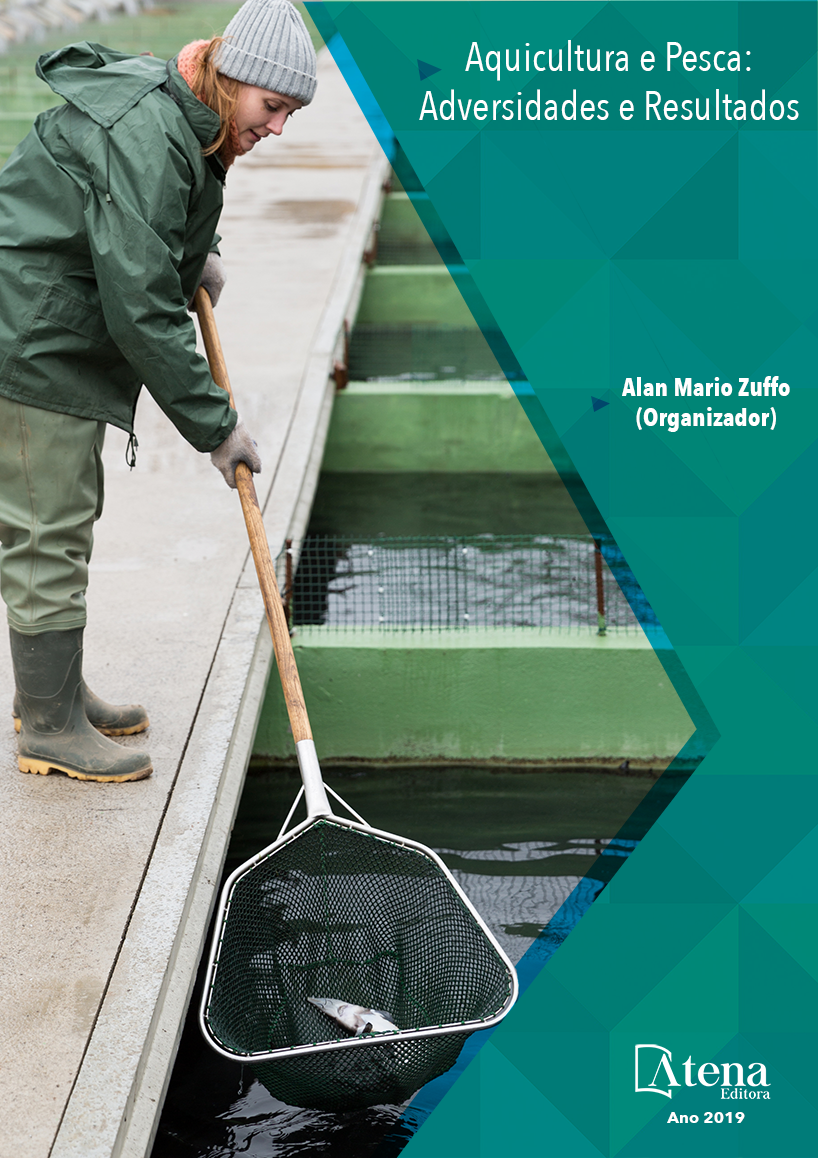
RENDIMENTO DO FILÉ DE ARRAIA (Potamotrygon motoro) CAPTURADA NO MUNICÍPIO DE SANTA QUITÉRIA, MARANHÃO, BRASIL
O objetivo deste estudo foi avaliar
o rendimento cárneo da raia (Potamotrygon
motoro). Foi feita uma coleta nos mês de abril de
2016 no município de Santa Quitéria, município
do Estado do Maranhão, em um lago conhecido
como Lago de Barreira. Foram coletados quatro
indivíduos da espécie, onde foram analisados,
medidos, pesados e filetados. Os indivíduos
foram entregues pelos pescadores já sem
cauda devido ao risco decorrente da presença
do espinho caudal. Os indivíduos foram
identificados como R1, R2, R3 e R4. O maior
indivíduo capturado (R4) apresentou o maior
peso (375 g), seguido de R3 (210 g), R2 (165 g)
e R1 (140 g). Ocorreu variação nos pesos e sexo
das arraias, ocorrendo apenas um exemplar do
sexo feminino (R3). Com a retirada da pele, o
rendimento médio do filé foi de 34,5%. Esses
valores estão abaixo da média se comparado
com os rendimentos da porção comestível de
algumas espécies de peixes de água doce.
Contudo, estes valores foram obtidos no
presente estudo, de indivíduos capturados em
idade juvenil, o que sugere que estudos sejam
realizados em exemplares de maior peso.
RENDIMENTO DO FILÉ DE ARRAIA (Potamotrygon motoro) CAPTURADA NO MUNICÍPIO DE SANTA QUITÉRIA, MARANHÃO, BRASIL
-
DOI: 10.22533/at.ed.27219290318
-
Palavras-chave: Elasmobranchii, processamento, filetagem
-
Keywords: Elasmobranchii, processing, filleting
-
Abstract:
The aim of this study was to
evaluate the yield of meat streak (Potamotrygon
motoro). The collection was realized in
April 2016 in Santa Quiteria’s City, State of
Maranhão municipality in a lake known as Lake Barrier. We collected four individuals
of the species, which were analyzed, measured, weighed and filleted. Subjects were
delivered by fishermen already tailless because of the risk from thorn flow. Subjects
were identified as R1, R2, R3 and R4. The most captured individual (R 4) showed the
highest weight (375 g), followed R3 (210 g), R2 (165 g), and R1 (140 g). It occurred
variation in weight and sex of stingrays, occurring only a copy female (R3). With the
removal of the skin, the average yield of the fillet was 34.5%. These values are below
average compared with the yields of the edible portion of some species of freshwater
fish. However, these values were obtained in this study, individuals captured in juvenile
age, which suggests that studies in higher weight copies.
-
Número de páginas: 15
- Elaine Cristina Batista dos Santos
- Thalison da Costa Lima
- Jailza Freitas
- Isadora Líria Nunes de Alencar
- Jackellynne Fernanda Farias Fernandes
- Diego Carvalho Viana
- Alline Vieira Coelho


